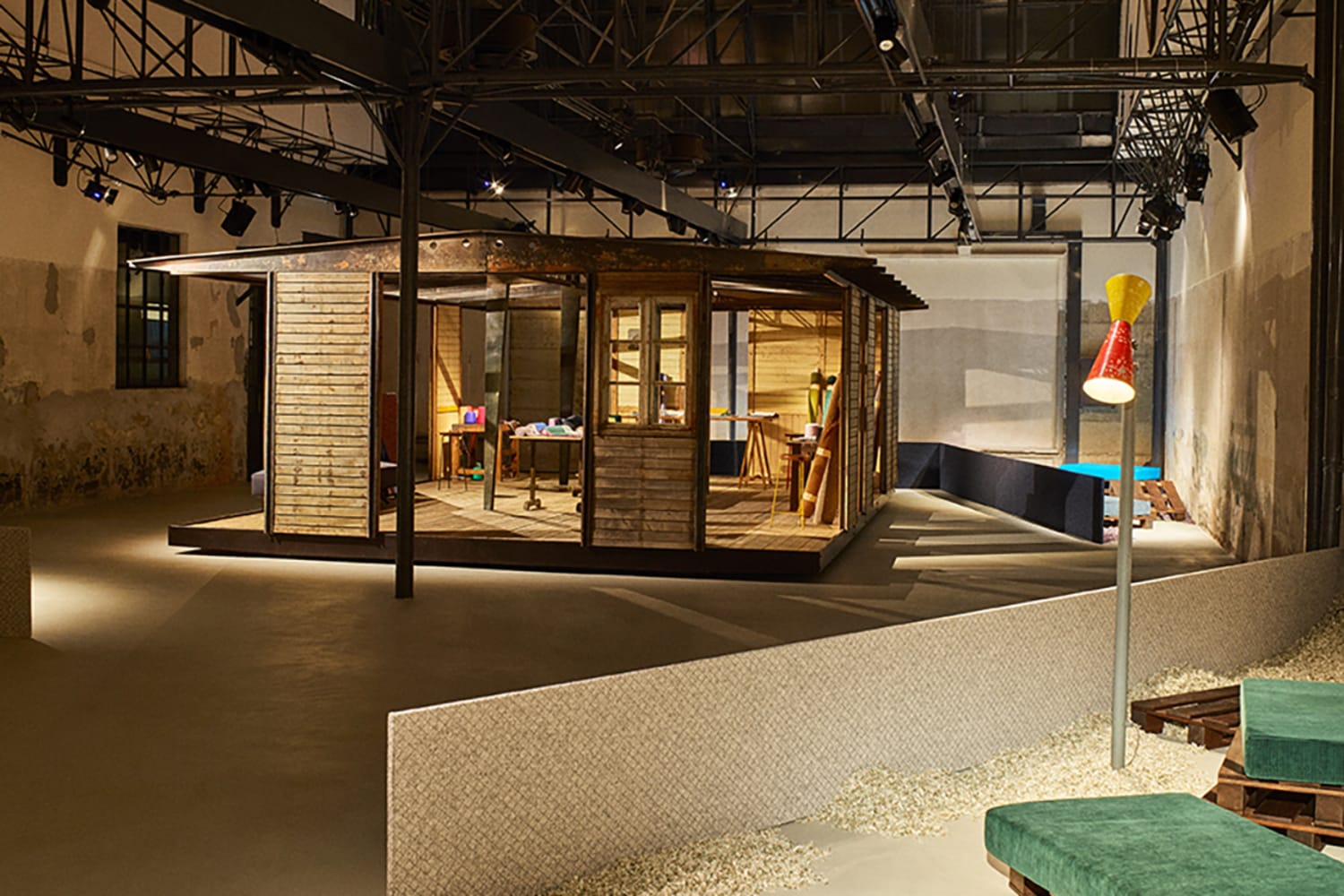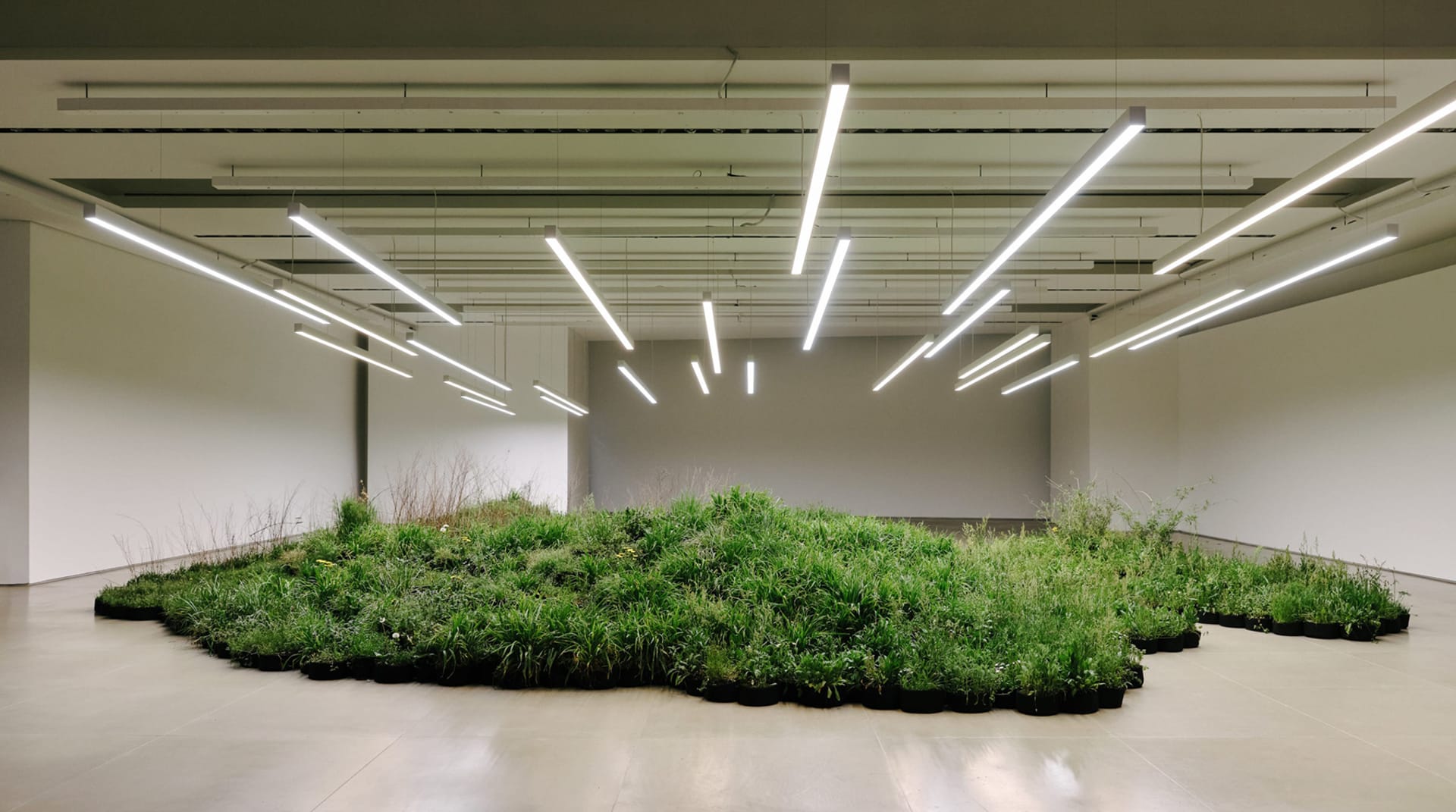Designers looked to a dystopic future during Milan Design Week 2019, reflecting the current climate rife with uncertainty and environmental concerns.
A darkness loomed over the 58th edition of Milan's Salone Del Mobile as designers prepare for an apocalyptic future.

Belgian fashion designer Raf Simons collaborated with Danish textile company Kvadrat for No Man’s Land, a disparate neighborhood set inside the industrial Garage 21. The exhibition was comprised of three prefab cabins, a long lonely strip of overgrown wild flowers and the shredded Atom textile sprawled across the floor recreating grassy lawns and patches of dust. The “dystopian” backdrop “is exactly what one imagines the suburbs would look like with Simons in charge,” according to Wallpaper.


Australian artist Linda Tegg highlighted how nature is being overlooked by filling fashion house Jil Sander’s Milan headquarters with wild plants gathered from around the city. Tegg scavenged urban plants like moss, ivy and scotch grass that grow in abandoned or neglected areas and reframed them as art by presenting them in a gallery-like setting. Tegg teamed up with Jil Sander creative directors Lucie and Luke Meier to create the Adjacent Field installation, which encouraged visitors to reevaluate their relationship with nature and foster a deeper appreciation for the natural world around them. The designers hope that the installation will serve as a reminder that environmental issues are more than just a trend. “We need to be ready to behave in different ways, even uncomfortable and inconvenient to make a change,” said Lucie and Luke Meier. “We need to find a way to coexist well with nature. The permanent installation of spontaneous plants will be a constant reminder, a catalyst for our awareness.”

With society increasingly taking note of the impending crisis, designers are finding actionable ways to address the situation, presenting forward-thinking approaches to this critical subject matter. Broken Nature: Design Takes on Human Survival invited designers, engineers and scientists to explore reparation strategies and promote environmental responsibilities with long-term plans and systemic thinking. These included the research project Italian Limes, which accesses melting ice in the Alps and investigates ways design can help limit harsh sun exposure, and Italian designers Formafantasma presents new ways of upcycling waste.

Broken Nature’s curator, Paola Antonelli is on a mission to raise awareness amongst the design community to think long-term and nudge consumer behavior in the same direction. “We are headed for extinction,” says Antonelli at the Broken Nature public symposium. “But what we can do is design a better, more elegant ending, so that the next species will treat us with a little more respect.” Despite the dystopic landscapes that cast a gloomy shadow over this year’s Milan Design Week, the bleak statement aims to encourage designers to preserve the planet and reverse the damage as much as possible to leave a long-lasting legacy for the human race.
Please provide your contact information to continue.
Related Content

ACT Good Report Names VML No. 1 Network

